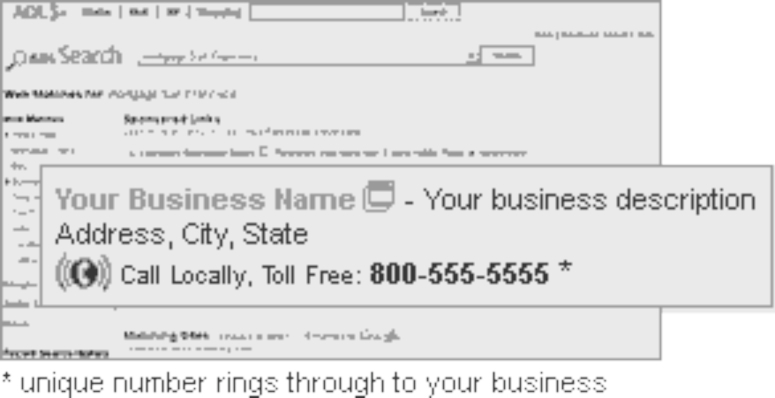Pay Per Call Advertising
I am sure you are familiar with so-called Pay Per Click (PPC) advertising, the model that has been operational in search engine marketing and banner advertising for several years now. The way it works is: The marketer places an ad on a certain website, and if the site visitor clicks on the ad, then the marketer pays the site owner a pre-arranged fee, usually a few pennies.
PPC was the Internet’s contribution to the world of advertising, which has traditionally been priced on a CPM basis. CPM means Cost Per Thousand (M means 1000 in Latin). Print and broadcast advertising media are typically priced by the number of “impressions,” an estimate of how many people will see the ad. A full page ad in a women’s service monthly might cost $110 per thousand readers of the magazine, or 11 cents per reader. To sell the ad, the magazine publisher had to make the case that the right women were in the audience. Then, the advertiser took the risk that the ad would deliver an effective message to the targeted readers.
The benefit of PPC is that it reduces the advertiser’s risk. The advertiser only pays when the audience takes the desired action, i.e., clicks through to the advertiser’s website. The website owner, too, finds PPC a benefit, because he no longer needs to make a strong case that his visitors are the right audience for the advertiser. In effect he can say, “Just try my website. If it works for you, pay me. If it doesn’t, then advertise somewhere else.” Simple.
PPC is so simple and effective for both parties that it has become the de facto standard for Internet advertising. There are a still few CPM deals left, but most advertising is priced on a PPC basis.
Pay Per Call
If Pay Per Click is the standard, then what’s next? The hot new thing is Pay Per Call. The way this works is this: The advertiser creates an ad with a unique toll-free number, and pays the website owner only when the visitor phones that number.
Pay Per Call is perfectly suited to local businesses, who are not interested in driving visitors to their website. Instead, they want visitors to make a reservation at their restaurant, or hire their plumbing services, or buy a product over the phone from their call center. In short, it’s perfect for an advertiser who traditionally used the local Yellow Pages of the phone book but now knows that prospects are searching for services using the Internet.
To manage the Pay Per Call campaign effectively, you need to be ready to answer the calls that come in, and convert them to a sale. You also need to know the numbers behind your sales process: the cost per lead for incoming calls, your average conversion rate for calls, and your average order size. This will allow you to figure out how much you can afford to bid for a call into your business.
Judson Brady, owner of Broad Street Flowers in Atlanta, for example, estimates that he is able to convert one-third of his incoming calls from Pay Per Call to a sale, averaging $72.
How are calls tracked, so payment can be made? The unique phone number makes it easy. However, using a different phone number for each version of your ad, to track each website, each offer, or each test message, can get cumbersome very quickly. You also want to avoid paying for repeat calls, hang ups, or calls that you couldn’t answer.
Ingenio’s Ad Network
A company called Ingenio, in San Francisco, runs a network for small businesses that places Pay Per Call ads on AOL. At Ingenio’s site, the business owner can sign up, state his target audience and geographical location, and the price he is willing to pay to receive calls (Ingenio’s minimum price is $2 per call received). Ingenio handles the rest, creating and placing the ad, providing the unique phone number, and managing the billing. The advertiser doesn’t even need to have a website to participate.
Pay Per Call is still in its infancy, but gaining traction fast. A recent Jupiter Research study of businesses with fewer than 100 employees found that 48% of owners were interested in trying Pay Per Call advertising. They said they would pay 5 to 15 times more for a phone lead than a click. While Pay Per Click bidding averages around $1.50 these days, Ingenio say it is getting $8 to $10 per call on average. Makes sense, because when you can actually talk to prospects over the phone, you are much more likely to convert them to a customer.
Here is an example of an ad that Ingenio might create for a local business.




